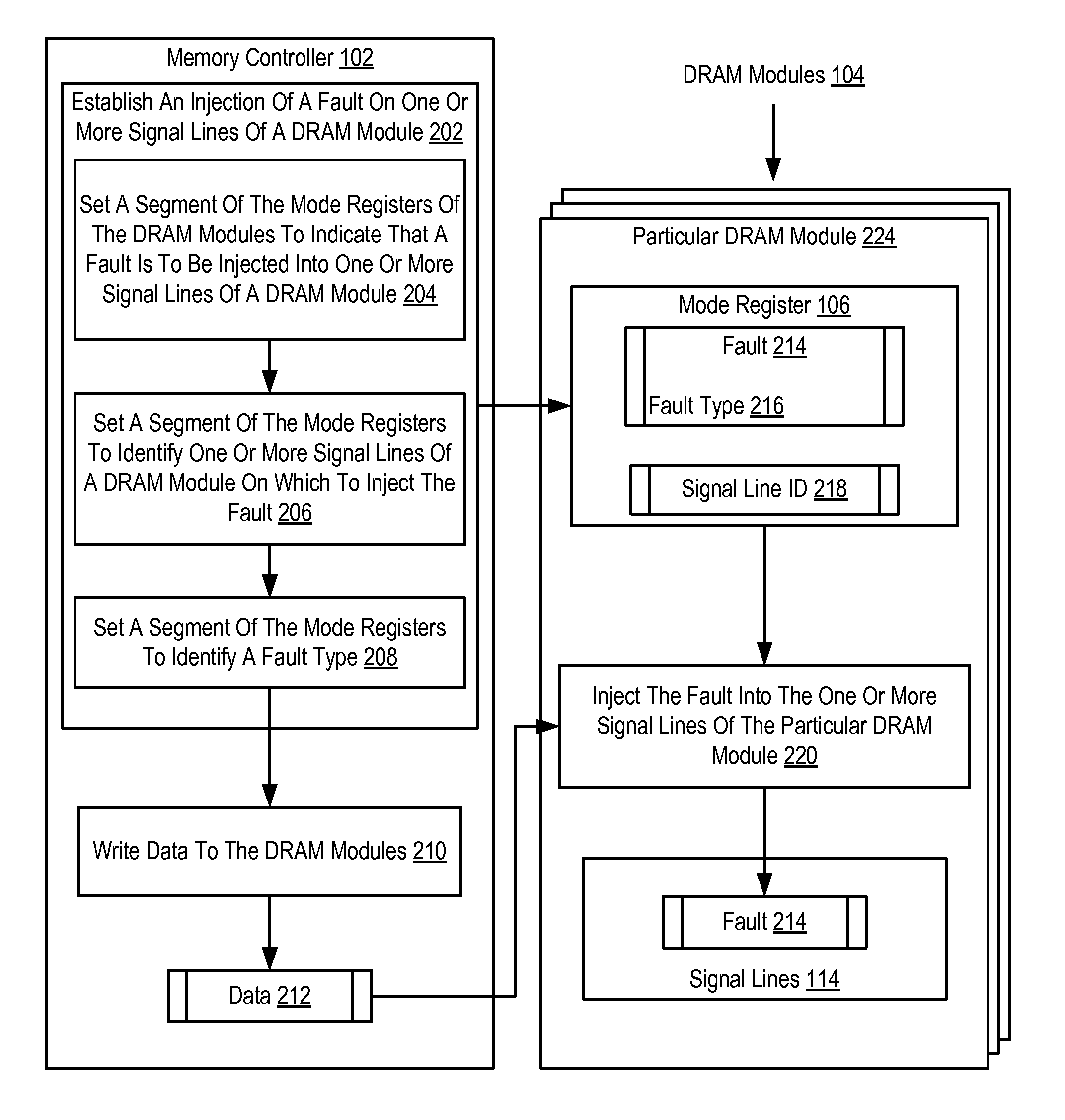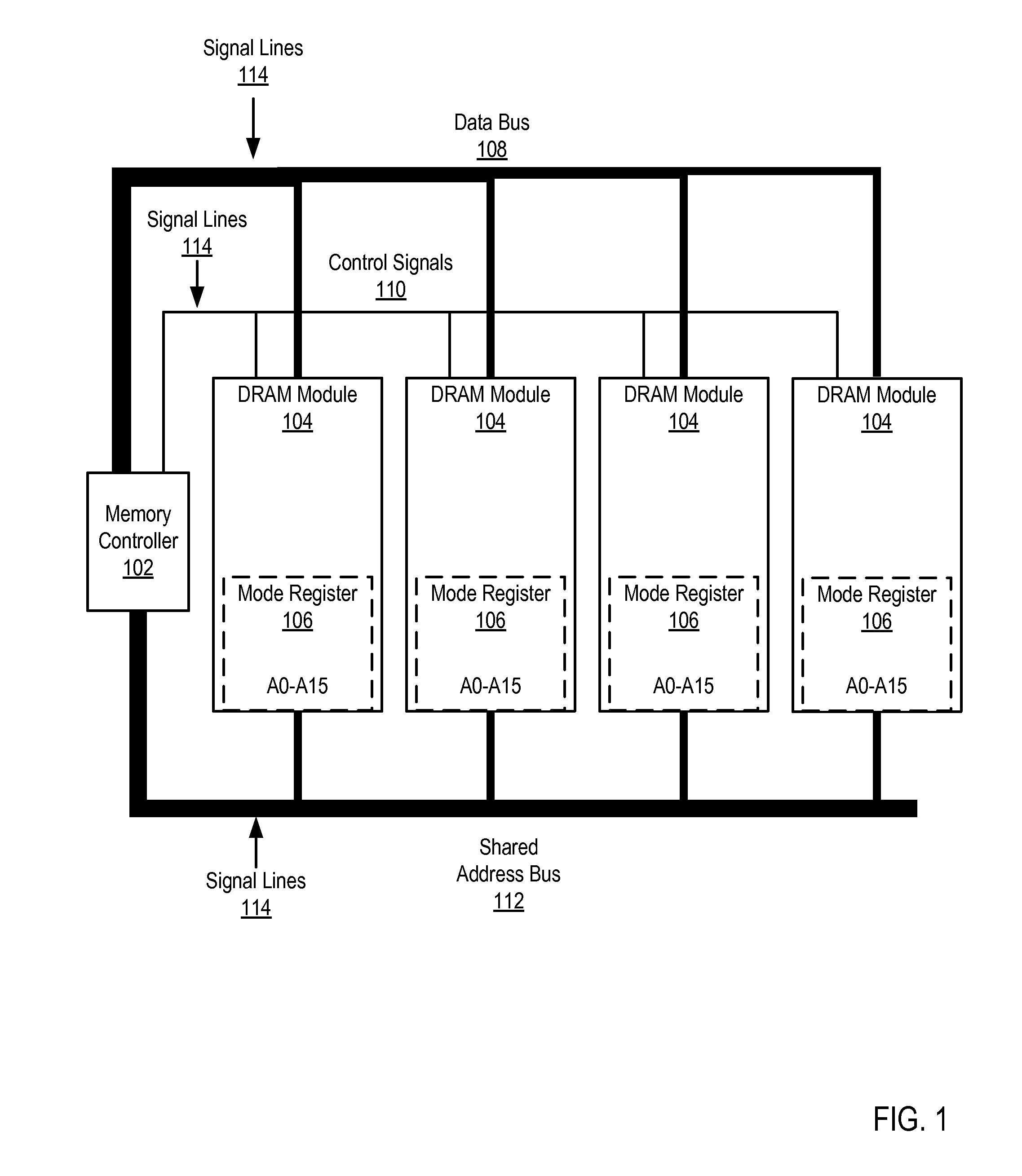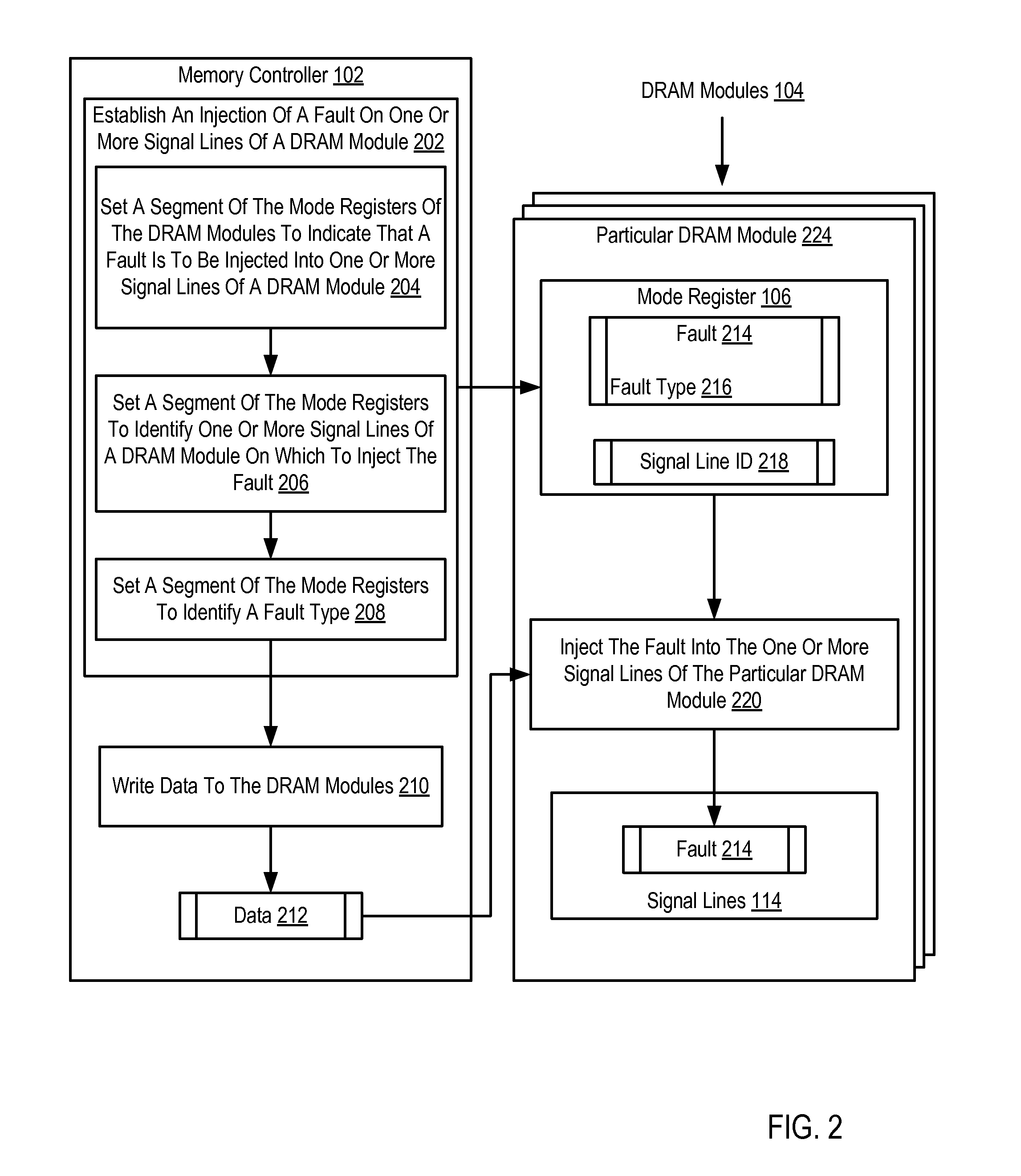Fault Injection In Dynamic Random Access Memory Modules For Performing Built-In Self-Tests
a dynamic random access memory and self-testing technology, applied in error detection/correction, instruments, digital storage, etc., can solve the problems of complex and sometimes expensive memory subsystems of compute systems, high testing costs, and complex devices in computer systems
- Summary
- Abstract
- Description
- Claims
- Application Information
AI Technical Summary
Problems solved by technology
Method used
Image
Examples
Embodiment Construction
[0011]Exemplary dynamic access memory modules, apparatus, and products for fault injection in dynamic random access memory (‘DRAM’) modules for performing built-in self-tests (‘BISTs’) in accordance with the present invention are described with reference to the accompanying drawings, beginning with FIG. 1. FIG. 1 sets forth a functional block diagram of a system for fault injection in DRAM modules for performing BISTs. A BIST mechanism within an integrated circuit, in this case within a DRAM module, is a function that verifies all or a portion of the internal functionality of the integrated circuit. The main purpose of BISTs is to reduce the complexity, and thereby decrease cost and reduce reliance upon, external test equipment for integrated circuits. The DRAM modules of FIG. 1 may execute a BIST after a fault is injected into one or more signal lines of the DRAM module.
[0012]The system of FIG. 1 includes a memory controller (102), an aggregation of hardware and firmware, which man...
PUM
 Login to View More
Login to View More Abstract
Description
Claims
Application Information
 Login to View More
Login to View More - R&D
- Intellectual Property
- Life Sciences
- Materials
- Tech Scout
- Unparalleled Data Quality
- Higher Quality Content
- 60% Fewer Hallucinations
Browse by: Latest US Patents, China's latest patents, Technical Efficacy Thesaurus, Application Domain, Technology Topic, Popular Technical Reports.
© 2025 PatSnap. All rights reserved.Legal|Privacy policy|Modern Slavery Act Transparency Statement|Sitemap|About US| Contact US: help@patsnap.com



